Tofu 101: How to cook tofu that doesn’t suck
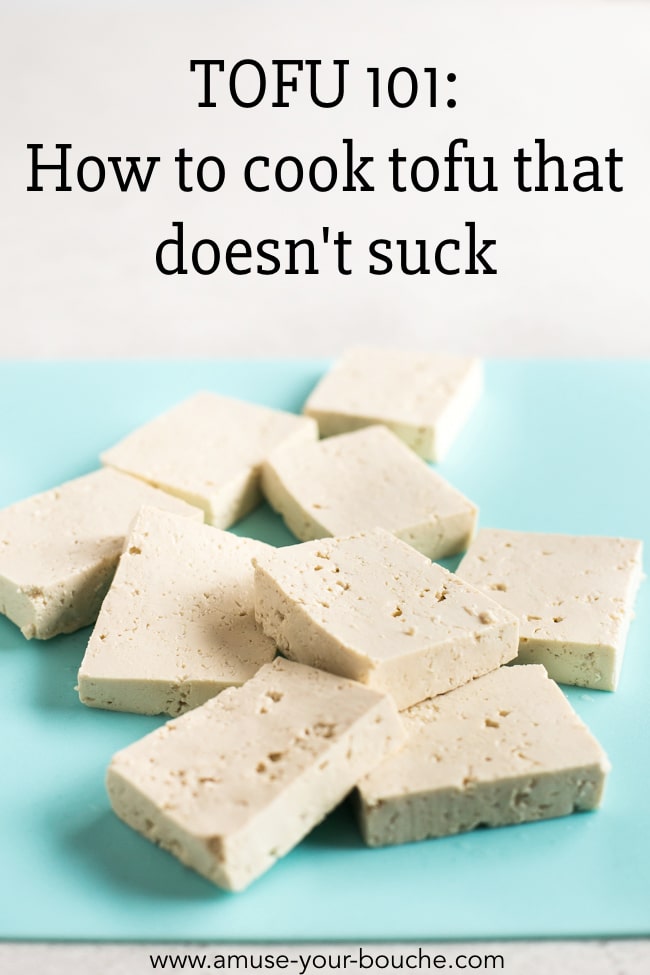
My ‘how to’ blog posts are always super popular (how to cook halloumi perfectly; how to make a perfect baked potato; how to make perfect roast potatoes), so this time I thought I’d focus on an ingredient that a lot of people have trouble with: tofu! Millions of people around the world love tofu, but also millions don’t, and part of the reason is that when it’s not cooked properly, it can end up a soggy, spongy mess. I have definitely had my share of rubbish tofu, but over the years I’ve found a method that always works well to give firm, crispy tofu every time. So here’s my method: how to make tofu that doesn’t suck! Plus there are lots of tofu recipe ideas at the bottom of the post, if that’s all you’re here for.
Just quickly, my usual disclaimer: I’m sure there are tons of different ways to prepare and cook tofu. This is certainly not the only method, or even the only good method, but it’s easy, and gives a great result, so this is the method I’m sharing today. I’m lazy, and I don’t like to add extra steps to my cooking just for the sake of it.
The basic method is this: fry your tofu in a frying pan. It’s pretty much that easy – but I have some tips to make your tofu extra good! No soggy tofu here. Strap yourself in for a mammoth post.
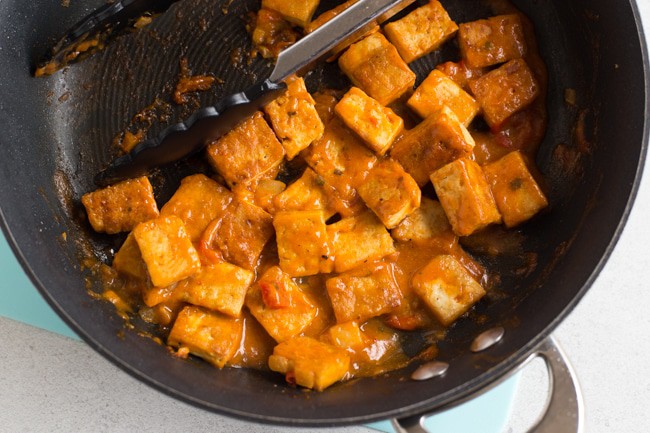
Step 1: Prepare the tofu
What kind of tofu should I use?
Different kinds of tofu are great for different purposes. Silken tofu, for example, is really smooth and is perfect for making puddings and other creamy desserts. The method described in this post specifically focuses on firm or extra firm tofu, which is firmer (no kidding) and crumblier than silken tofu. This method won’t work with silken tofu.
What shape should I cut my tofu?
Ultimately the shape of your tofu will be determined by what you’re planning to use it for. If you’re making tofu bacon bits, for example, you’ll need to crumble it up into little pieces. Or if you’re making a tofu bacon sandwich, you’ll need thin slices.
But if you’re just frying up your tofu to serve in a sauce (like you can see in the photo above), I’d recommend cutting the tofu into small cubes – maybe 1/2 inch pieces. I find smaller pieces get much crispier than bigger pieces, so it’s easier to avoid succumbing to the tofu curse: sogginess. I do sometimes cut my tofu into more interesting shapes (triangles are always pretty!), but I find it does end up squidgier this way.
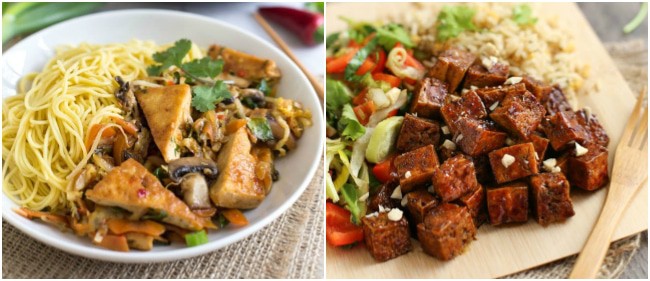
Do I need to press my tofu before use?
Lots of people swear by pressing their tofu before use – this squeezes out any excess liquid, which supposedly helps to avoid sogginess. You can either use a tofu press (like this one: Amazon UK* / Amazon US*), or just lay the tofu in between some kitchen paper or a folded tea towel, and pile it up with heavy objects to squeeze out the liquid.
In all honesty, I don’t always press my tofu, because I’m lazy, and I don’t always have the time. I can’t say I’ve ever noticed a huge difference, but in the interests of science, I thought I’d do a little experiment. I pressed a few pieces of tofu, and left the rest unpressed. Since I don’t have a tofu press (worst vegetarian ever), I used the tea towel method, and pressed my tofu slices for 30 minutes. I used a big pan full of water to provide the weight on top, as it’s very heavy and there’s less danger of it toppling over than if you use a pile of pans!
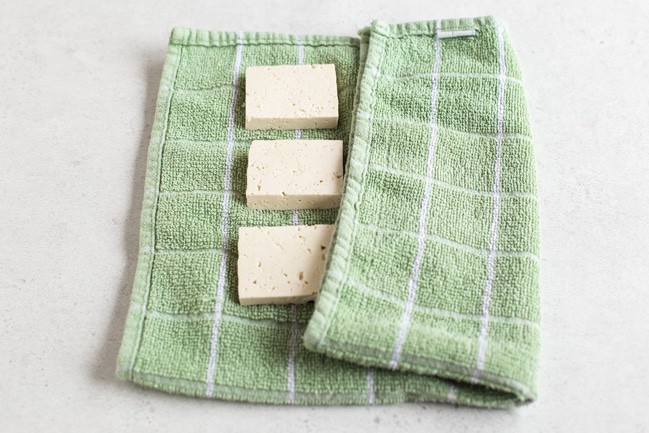
The pressed tofu, perhaps unsurprisingly, ended up a little thinner than the unpressed tofu. I fried up both pieces in the same pan, and compared the textures. The difference was fairly small – the pressed tofu was a little firmer and chewier, but I think most of the difference could probably be accounted for by the fact that the slices were thinner after being pressed. If you’re a tofu connoisseur, or you’re really concerned with getting super chewy tofu, pressing your tofu seems worth it – otherwise, the unpressed tofu was just fine. Both crisped up in basically the same way.
So, do I need to press my tofu? Verdict: Yes, if you can be bothered. Otherwise, don’t worry.
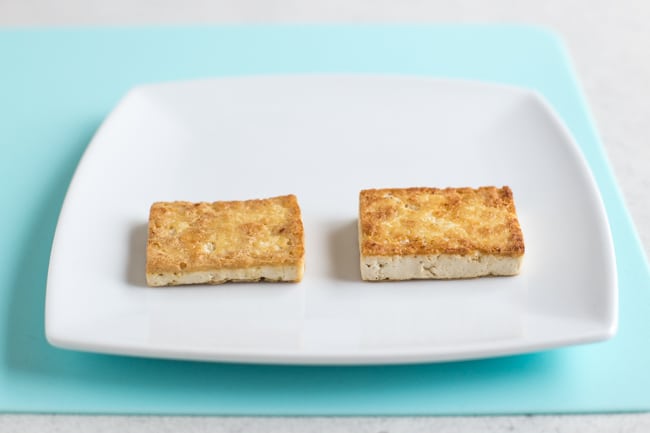
Should I freeze my tofu first?
I’ve also heard that some people like to freeze (and then thaw) their tofu before use. Supposedly, as the ice crystals form, they create little holes in the tofu, giving a chewier texture.
Some sources recommend throwing the whole pack of tofu in the freezer, still packed in water, and other sources recommend draining and slicing the tofu before freezing. I tried both methods, and I found very little difference between the two. If you’re only going to want to cook a few slices of tofu at a time, it seems beneficial to drain and slice it first, so you can just defrost a little at a time; but if you’ll want to cook it all anyway, I wouldn’t bother.
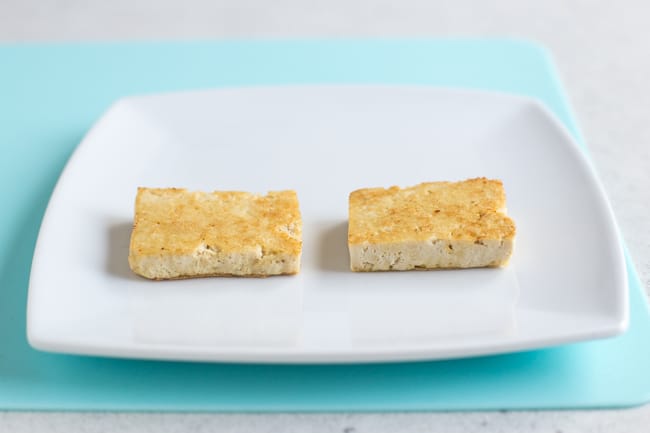
I didn’t find that freezing the tofu had any major effect on its texture – nothing that I would notice without directly comparing it alongside unfrozen tofu, anyway. It didn’t have a detrimental effect, so freezing is definitely something you can do to preserve your tofu for longer, but it’s not something I would go out of my way to do again. Just make sure that if you do freeze your tofu, you thaw and cook it thoroughly to get rid of that weird ‘frozen’ taste.
So, do I need to freeze my tofu? Verdict: No, unless you want to preserve it for longer.
Do I need to marinade my tofu?
If you’re serving your tofu fairly plain (say, tofu skewers with a dipping sauce), it’s definitely worth marinading your tofu before cooking to impart as much flavour as you can. Just place the uncooked tofu in a dish with your marinade, and leave it for a while (I’d aim for at least 30 minutes), before frying in a pan as normal.
On the other hand, if you’ll be adding a flavourful sauce to your tofu anyway, I really wouldn’t bother with the marinade – it’s just creating extra steps for no real gain. So for this method of cooking tofu, I use plain, non-marinated tofu.
So, do I need to marinade my tofu? Verdict: Only if you’re not adding another sauce.
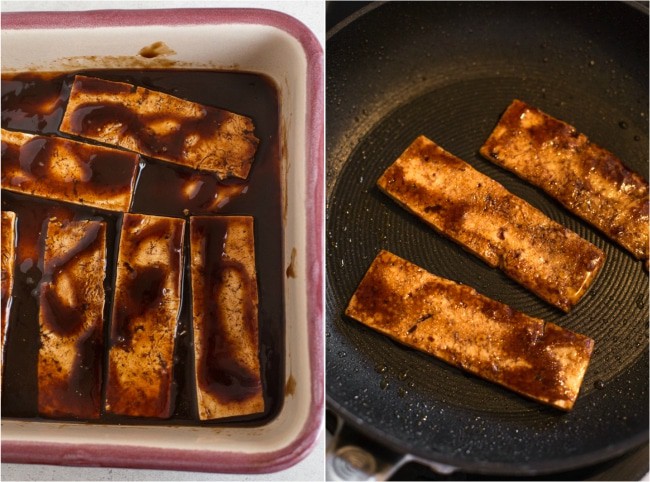
Do I need to coat the tofu in cornstarch?
I’ve tried this before too! Supposedly, tossing the cut tofu in a little cornstarch can make it crisp up more as it cooks. But again – I didn’t find a huge amount of difference. The tofu did end up with some extra crispy bits around it when it was on its own in the pan, but once I added the sauce, you couldn’t really tell. I think as long as you follow my #1 tip while you’re frying it (see below!), you don’t need to bother with cornstarch.
So, do I need to coat the tofu in cornstarch? Verdict: Nah.
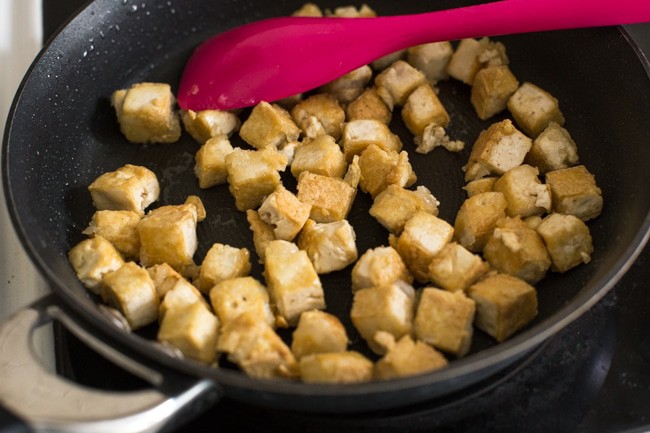
Step 2: Cook the tofu
So, you’ve cut your extra firm tofu into small cubes (potentially after pressing it, if you can be bothered), and you’re ready to cook. You can fry your tofu in any kind of frying pan – just add a dash of oil, and you’re good to go. I tend to use an unflavoured oil like rapeseed oil, but something like coconut oil or sesame oil will give a bit more flavour, if you prefer.
Leave the tofu alone for a while until it’s golden brown underneath, then flip it over (I find it easiest to use a pair of tongs, so I can turn over each piece of tofu individually). There’s no need to stir the tofu constantly – give it a chance to crisp up before moving it around.
Here’s my top tip for perfect, non-soggy tofu: cook the tofu until it’s too dry and crispy.
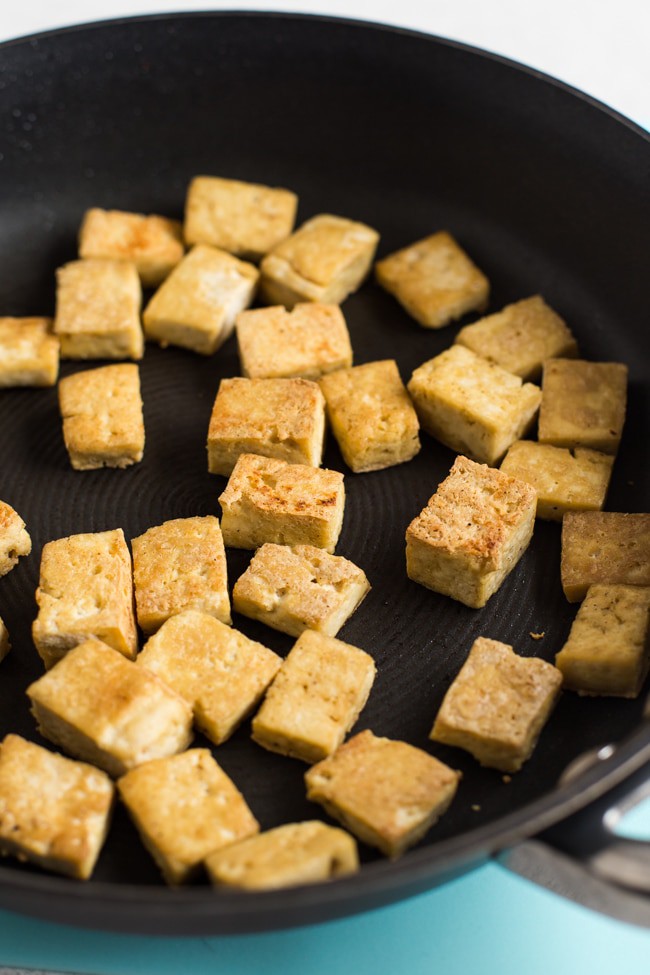
See that? It practically looks like croutons. Far too dry to actually eat in its current state. But then…
Step 3: Add your sauce
…the sauce brings it back to life! If you add sauce to soft tofu, that’s when you end up with a soft, squidgy mess. But add sauce to super dry and crispy tofu, and it rehydrates it, with the tofu remaining firm and chewy.
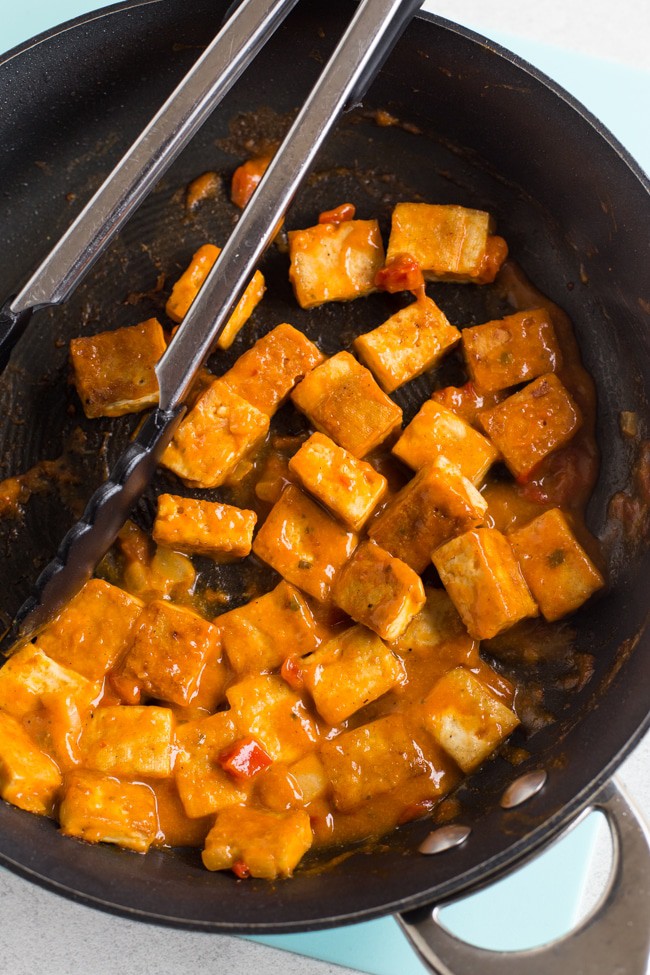
And that’s all there is to it! Literally… just fry it. After doing my little experiments, I mixed all 4 kinds of tofu together in the pan (pressed / unpressed / frozen in a block in liquid / frozen in individual slices), and honestly as I was eating, I wasn’t aware of some pieces tasting better or worse than others. For the vast majority of people, I think any tiny, tiny differences are probably not worth worrying about. The key thing to remember is just to fry your tofu until it’s just a bit too crispy before adding the sauce.
13 vegetarian tofu recipes
In case you need a few ideas for how to apply your new-found knowledge about how to cook tofu!
Nutty tofu lettuce wraps with peanut sauce [vegan] (pictured above)
Sticky sweet chilli tofu [vegan]
Tofu Nicoise salad from Natural Kitchen Adventures [vegan]
BBQ tofu bacon BLT wraps [vegan]
Sweet and spicy orange tofu [vegan]
Blackened tofu steaks [vegan]
Spicy veggie laksa with crispy tofu [vegan] (pictured above)
Pina colada tofu bowls with coconut rice [vegan]
Red Thai satay tofu [vegan]
Tofu bacon BLTs [vegan] (pictured above)
Honey soy tofu [vegan option]
20 minute Thai green tofu bowl from Tinned Tomatoes [vegan]
Sesame tofu with broccoli from Budget Bytes [vegan]
And there you have it. Everything you need to know about how to cook tofu… that doesn’t suck. Let me know if you have any other favourite tofu recipes or any other amazing tips about how to cook tofu!

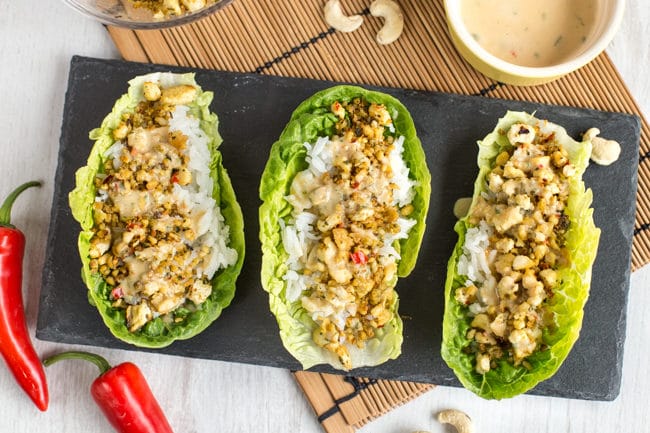
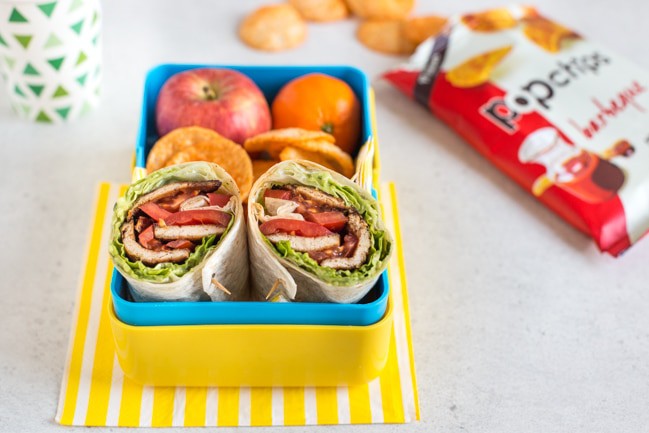
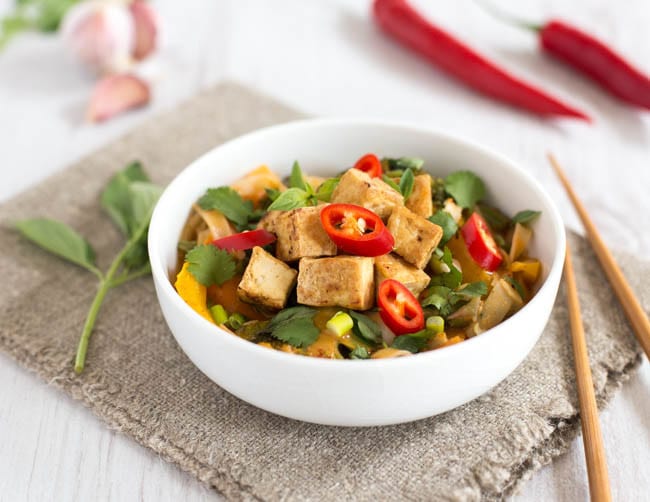
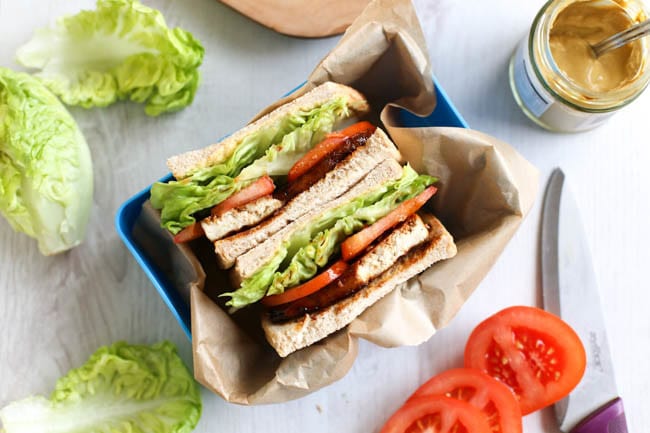
Thank you for the simple way to cook tofu. I’ve just finished cooking tofu and broccoli. It was awful…the recipe called for the tofu to be covered in cornflower aah!! the little cubes stuck to the non-stick frypan and i ended up with lots of black cubes that i scrapped off the frypan ( I now have it sitting in a bowl of water and I’ll leave it there till morning while I consider having another glass of red). Thanks once again for making it all so easy. I’ll now have a look at some interesting sauces.
Oh dear! Yes I’ve never found the cornflour necessary personally. Hope this way works better for you! :)
Becca .. I find your approach refreshing … and a joy to read.. I enjoy how you do the comparison versions .. I myself like to find short cuts too.. so again really enjoy reading your pages/ideas/recipes.. I’ve worked in kitchens myself for many years.. so really enjoy when I find something / some one new to discover follow learn from .. Keep up the creative foodie journey ..
Currently sitting here eating my little adapted version of your delightful fried gnocchi .. Wow why has I taken me so long to discover this gem .. Yum eeee .. Thank you ..
Christine Freo..
Fremantle, Western Australia
Ahh Chris, that’s such a lovely comment! I’m glad you found me :)
Thank you very much for your time and knowledge!!!
You’re more than welcome!
This is honestly the most helpful tofu article I’ve read! It really is just so informative. I typically bake my tofu (because I’m even lazier) and find that it gives a pretty good result as well!
Ahh thank you so much Robbin, it took a long time to write so that means a lot! Any tips for baking tofu? It’s not a method I usually use.
I typically lightly press tofu and cut in .5 inch cubes, then bake at 400 F for ~30 minutes. I don’t even flip it (lazy life), but it’s crispy-chewy and takes on sauces well!
Sounds good, I’ll give it a try next time! :)
Here is an odd tip when it comes to pressing tofu. If you have a Japanese vegetable press, place tofu in bottom of it, put lid on, and tighten the compression disk. Turn container upside down in a larger bow. No damp towels, no towel lint on your tofu
Interesting, I’ve never heard of a Japanese vegetable press! Sounds like it would work well – I do always end up with bits of fluff on the tofu from the towels haha
I do love tofu, so I’m sure I will be trying some of your recipes! As a sometimes lazy cook though, I would definitely recommend the ready marrinaded tofu pieces for days when feeling super lazy. You don’t have to fry them, cut them or do anything at all to them except chuck them in to whatever stew or sauce you fancy, and I’ve always found they work well!
Will be definitely be trying the frying method soon though.
Ooh yes I’ve seen those, will definitely give those a try! :)